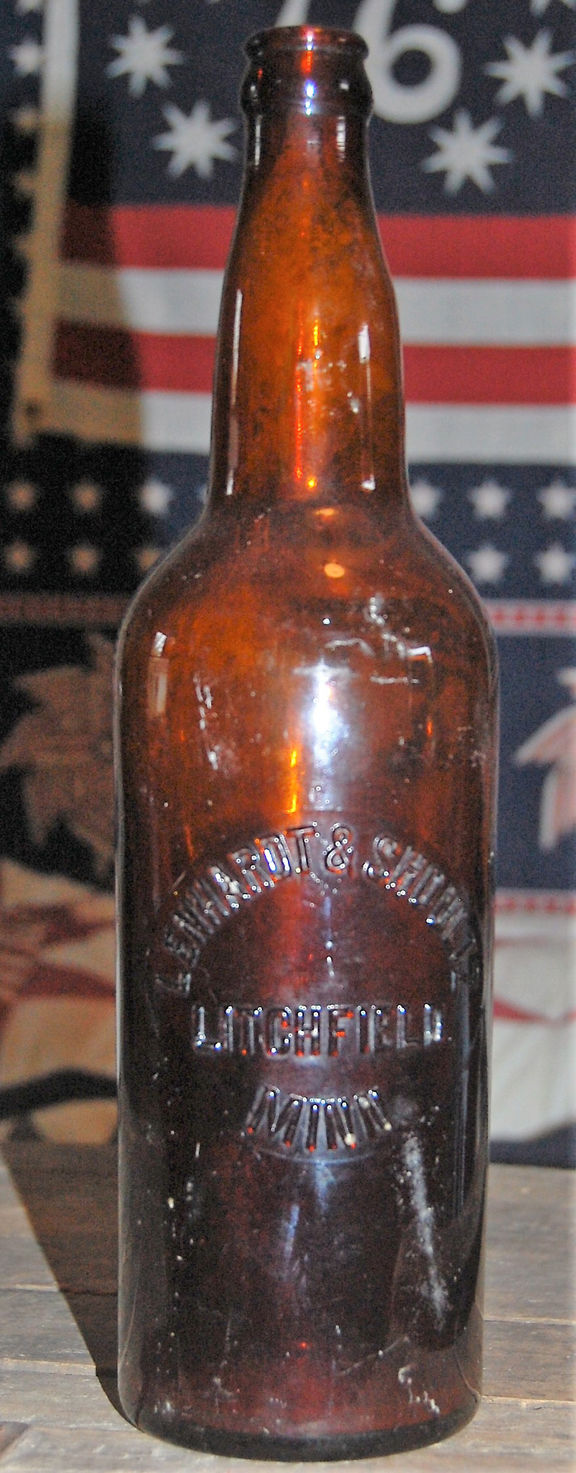A toast to the old Litchfield Brewery
- Sr Perspective

- Oct 1, 2020
- 4 min read
Historic brewery opened its doors in 1875
By Scott Thoma
There is little physical evidence today that a brewery once existed on the north shore of Lake Ripley in Litchfield, but its memories have been well-preserved.

Erhardt and Charlotta Lenhardt, along with their four-year-old son Edmundt, emigrated from Hildburghausen, Thuringen, Germany and arrived by ship to the New York Harbor on July 4, 1873.
“There were all kinds of fireworks going off, and people waving flags and things like that,” said Jeanie Doran of Litchfield, the great granddaughter of Erhardt and Charlotta. “They wondered what was so important and why the people weren’t working.”
Their daughter, Minnie, was born the following year.
Soon after moving to Litchfield, Lenhard requested that his friend, George Roetger, join him as partner. The two had been brewers in Germany. The Lenhardt and Roetger Brewery was up and running by 1875. They produced what they referred to as export lager beer.
“I’ve been learning a lot of things about the brewery and the family history,” said Doran. “It’s really interesting to learn how they came to America; how they ended up (in Litchfield) and started a brewery and ran the hotel in town.”

Roetger sold out his portion of the brewery in 1882 and it became known only as the Erhardt Lenhardt Brewery until 1905, when it was renamed the Litchfield Brewery.
Erhardt retired and sold the business to his son, Edmundt and son-in-law William Shoultz (Doran’s grandfather), in 1912. They named it the Lenhardt-Shoultz Brewery until it closed for good in 1914 when Meeker County went dry, five years before the Volstead Act (formally National Prohibition Act) became enacted into law in the United States, prohibiting the manufacture and sale of alcoholic beverages.
A fire in 1915 destroyed many of the buildings on the site with the exception of a couple of storage buildings and the main house.
The brewery was built on Lake Ripley at the highest point of the lake shore, which allowed for several cave-like brick cellars to be dug out above the water level to keep the lager well-preserved. Building next to the lake also allowed for easy access for ice to be cut in the winter and be stored in the ice house.
Among the buildings that comprised the brewery was a bottling house as tall as a barn with two-foot thick walls. To insulate the bottling house, clapboards were used on the outside, while 14 layers of tar paper assisted in controlling temperatures. White plaster walls were used on the inside. Other buildings included the malt house, ice house, stable, swine shed and chicken coop. The stable housed two cows, a team of carriage horses, and a team of horses to pull the beer wagon.

“The family’s home and another home for workers were built there, too,” said Doran. “Most of the workers also came from Germany.”
All the work at the brewery was done by hand with no operative machinery in the early years. Heavy sacks of barley, for instance, would have to be carried up a ladder in order to be poured into large vats or warm water. Bottles used for the beer had metal caps affixed to wires around the neck of the bottle in order to keep the cap in place. Workers would have to fasten and seal each cap by hand.
The beer was distributed by horse and wagon to saloons in Litchfield and as far as 15 miles west to Atwater.
The brewery cellars, which actually looked like caves, have since been filled and homes now occupy the land where the brewery once stood. On the side of a garage on the location is painted with the word “Brewery Estates.”
In 1947, well after the brewery had closed and the caves had been filled in, a woman named Esther Williams was living on the property when a heavy rain caused portions of her property to sink.

Williams was aware that there were once caves from the brewery on her property and called in an excavator, who discovered three 12’ x 50’ brick-walled caves; measuring 12’, 14’ and 16’ tall. The caves were filled back up, although it took 150 truckloads of fill to complete the job.
During the excavating process, numerous items were recovered from the former brewery. Doran is in possession of a wooden brewery box used to transport the lager, an amber beer bottle with the brewery named in raised letters, and some clear glass bottles with the old-style caps still attached with wire fasteners.
Erhardt also owned and operated the historic hotel in downtown Litchfield from 1881 until 1929, when Erhardt passed away.
The Lenhardt family purchased the hotel, previously called the Howard House, from Col. Jacob Howard, a Civil War veteran, in 1881. The three-story building also housed other businesses such as a coffee shop, barber shop, doctor’s office and meeting rooms. The building had several other owners before it was razed in 1979.
“It was a sad day in Litchfield to see this historical site reduced to rubble,” said Doran.
The Lenhardt family also once owned other businesses in town, including a pool hall, saloon, men’s clothing store, and jewelry store.
The Lenhardt family’s generous donations helped build The Grand Army of the Republic Hall in 1885, which is now on the National Register of Historic Places, as well as The Opera House in 1905 and a Civil War Monument in 1909.
Erhardt was also the founder of the First Evangelical Lutheran Church and built numerous homes in Litchfield for family members; many of which are still occupied today.
The brewery has been gone for over 100 years, but locals can still toast its memories.




Comments